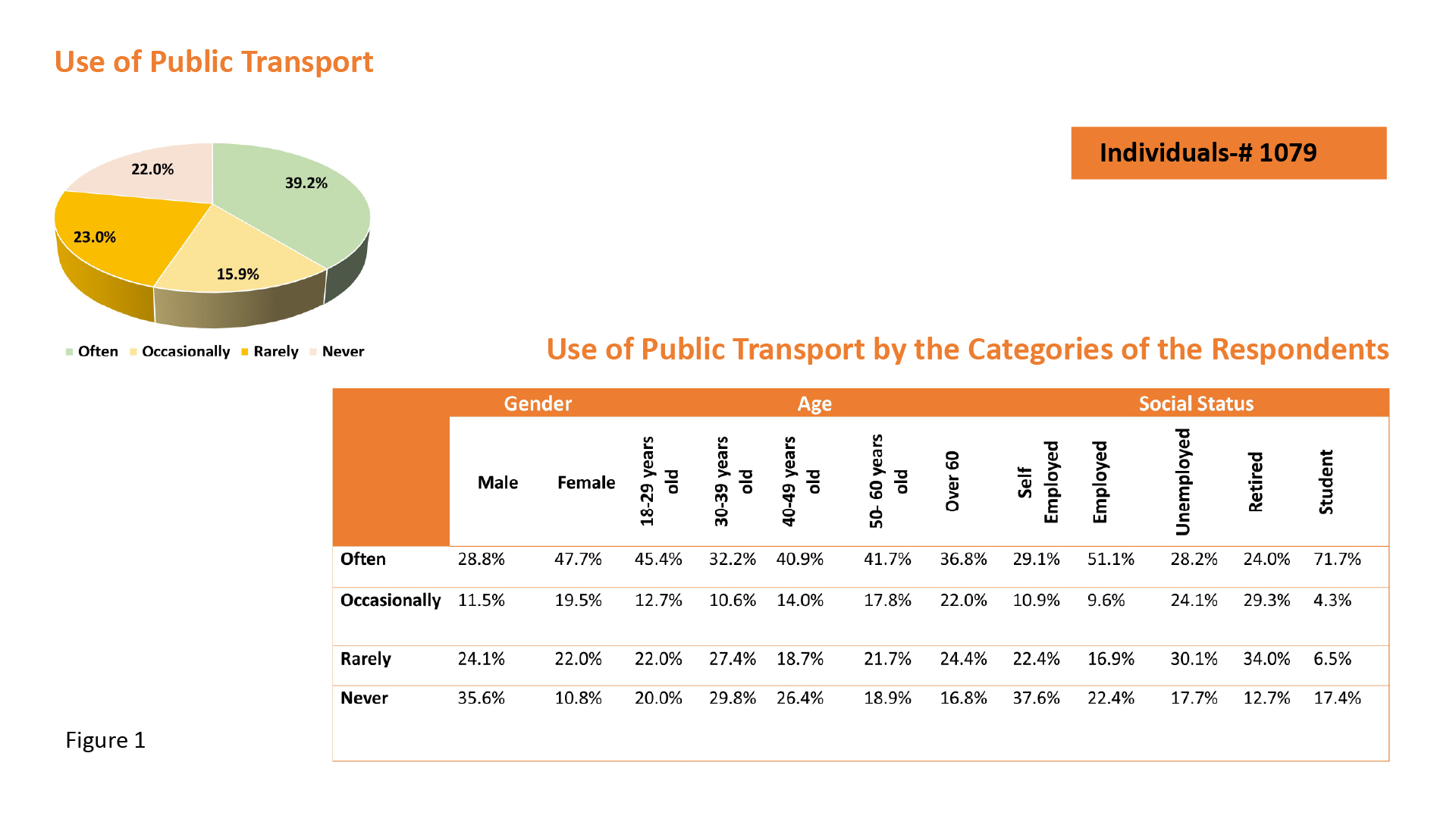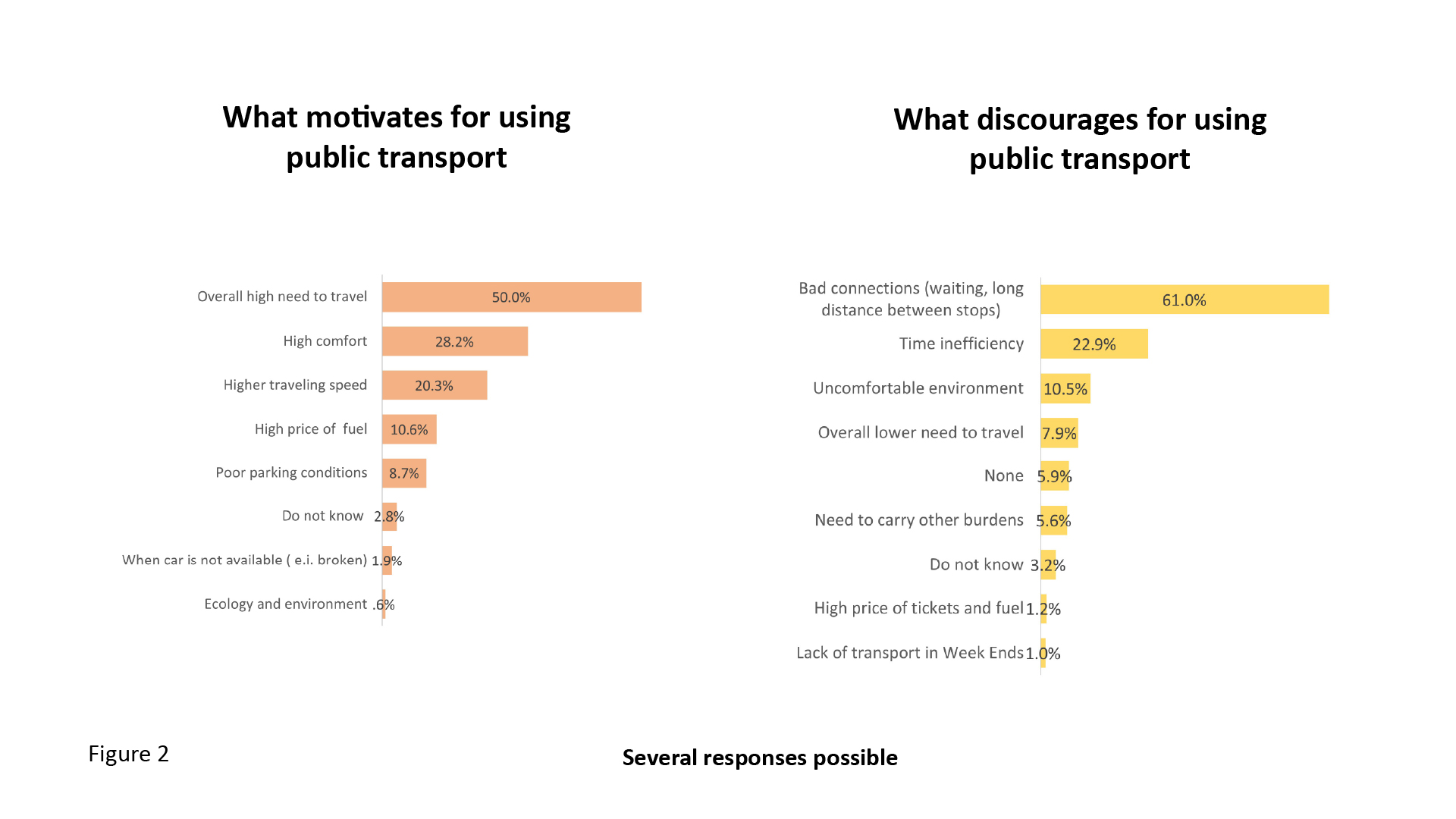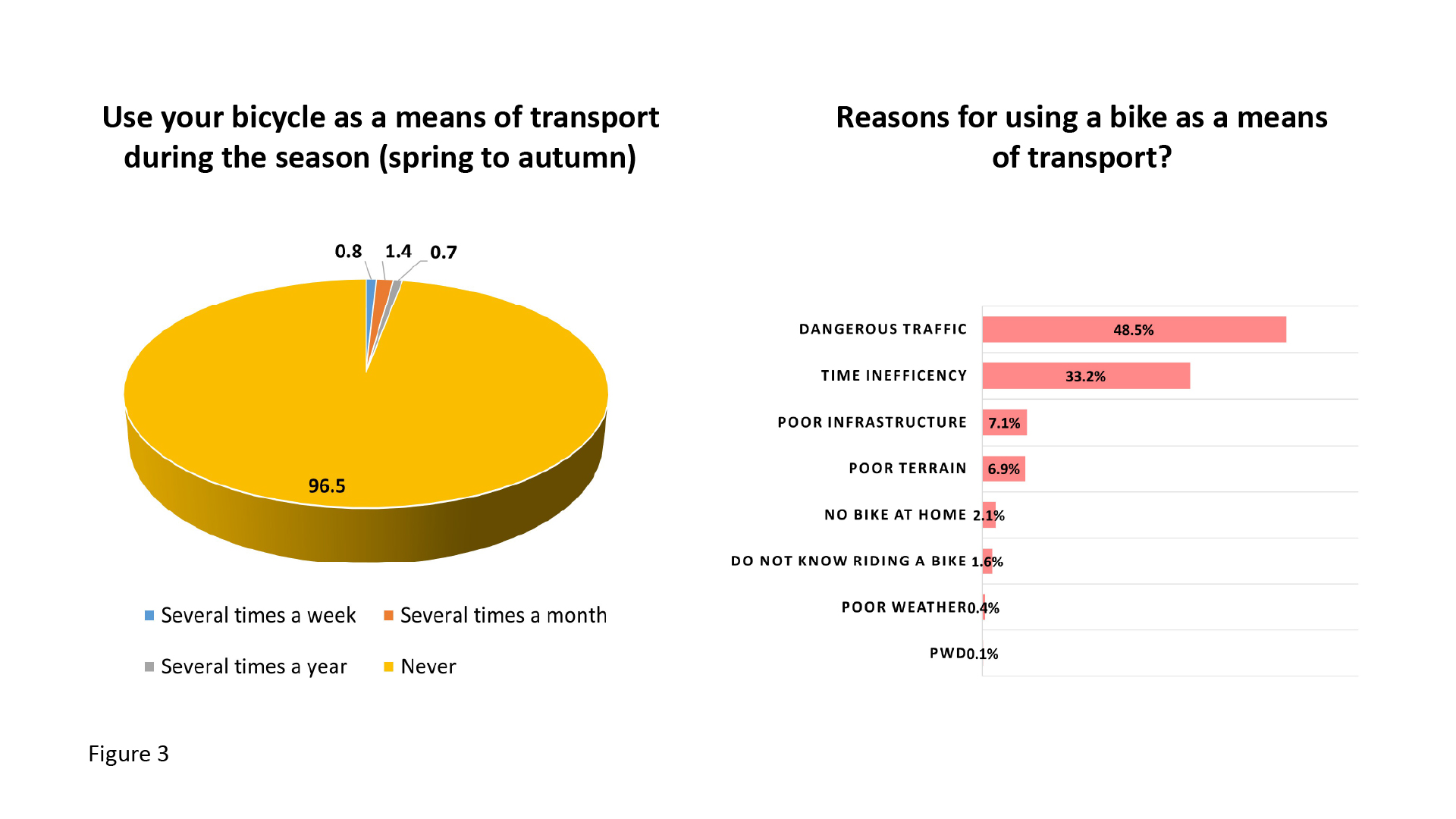
Over the past several years, the city of Kutaisi has taken important steps toward implementing sustainable urban transport solutions in line with national development goals and global best practices. With growing awareness around the importance of sustainable development, Kutaisi has joined other progressive cities in developing and implementing an Integrated Sustainable Urban Mobility Plan (ISUMP), which puts citizens’ needs at the center of mobility policy and envisions the creation of an efficient, accessible, and environmentally friendly transportation system.
To support this effort, a large-scale household mobility survey was conducted as part of the broader sustainable mobility planning process. The survey assessed how residents move through the city, identified challenges with existing transport modes, and explored the level of interest in alternative and low-emission options. The results provide a strong evidence base for shaping the ISUMP and reveal valuable insights into current mobility patterns and future priorities for Kutaisi.
Like many post-Soviet cities, Kutaisi’s mobility system is primarily based on conventional modes such as minibuses, buses, and taxis. Although private vehicles account for a notable share of urban mobility, survey findings show that car ownership remains relatively modest: the average household owns just 0.79 vehicles, and only 30% of the population report owning a car. Notably, female car ownership is substantially lower than that of males, at only 14.7%. Fuel prices and parking challenges were cited as the main deterrents to car use.
Despite these limitations, the public transport system continues to serve as the dominant mode of transportation within the city. According to survey data, 39.2% of respondents use public transport frequently, while another 15.9% do so occasionally (Figure 1). Overall, 51.1% of all urban trips-including travel for work, education, shopping, and leisure-are made by public transport. However, challenges remain among those dissatisfied with the current system; the most reported issues were long wait times and the insufficient number of stops.
A substantial proportion of urban mobility in Kutaisi is done on foot. The compact structure of the city-particularly its dense core-enables residents to access essential services and destinations without the need for motorized transport. According to the survey, 35.4% of work-related trips and 29.6% of shopping trips are carried out on foot. These figures underscore the strategic importance of pedestrian mobility in the city’s transport ecosystem. Walking is not only a low-cost, accessible, and health-promoting mode of movement, but it also plays a role in reducing urban congestion and pollution. However, for walking to be truly prioritized as a central pillar of sustainable mobility, dedicated investment in pedestrian infrastructure is required. This includes improving sidewalks, creating shaded walking corridors, enhancing lighting for safety, installing pedestrian signals, and ensuring accessibility for people with disabilities and limited mobility.
By contrast, cycling remains largely untapped as a mobility option in Kutaisi. Only 3.9% of residents report owning a bicycle, and a striking 96.5% say they never use one as a means of transportation. The barriers to cycling are multifaceted. Survey respondents frequently cited dangerous traffic conditions, a lack of safe and continuous cycling infrastructure, and inefficient travel times due to poor road integration as the main deterrents. These factors not only discourage existing cyclists but also prevent potential users from considering cycling a viable alternative. Notably, the data indicate that younger residents-particularly students and young professionals-are more open to adopting bicycles, provided safety and infrastructure concerns are addressed.
This suggests that with the right interventions, cycling could shift from a marginal to a mainstream mode of transport. The establishment of protected bike lanes, the introduction of shared bike systems, public awareness campaigns, and the integration of cycling with public transport networks could help unlock this potential. In a city like Kutaisi, where distances between key destinations are relatively short and topography is generally favorable, such changes could dramatically alter the modal share of cycling and contribute to the broader goals of environmental sustainability, urban health, and traffic decongestion.
An effective city mobility system delivers wide-ranging benefits beyond simple transportation efficiency. By encouraging non-motorized alternatives such as walking and cycling, cities can significantly reduce congestion, improve air quality, and promote public health. Many developed cities are investing in dedicated bike lanes, pedestrian-friendly urban design, and electric public transport systems as part of their commitment to the Sustainable Development Goals.
A notable example of successful long-term urban mobility planning is the German city of Freiburg, whose population of approximately 229,636 makes it comparable in both scale and economic profile to Kutaisi. Freiburg’s transformation began in the 1960s, when rapid motorization led to severe traffic congestion, deteriorating air quality, and growing dissatisfaction with urban life. In response, the city adopted a visionary General Urban Transport Policy in 1969, one of the first in Europe to explicitly recognize the need for balancing different modes of transport-public transit, walking, cycling, and private vehicles-within a coherent, city-wide strategy.
Over the decades, Freiburg’s mobility policy underwent continual refinement. By the late 1970s, the city began investing heavily in tram and bus networks, pedestrian-friendly urban design, and an expanding network of cycling infrastructure. The strategy was based not on restricting car use outright but on making alternative modes more attractive, accessible, and safer. Zoning policies supported this shift: new developments had to ensure close access to public transport and include minimal parking space to discourage car dependency.
By 2009, Freiburg was recognized as a model for urban sustainability when it was awarded the “European Green Capital Award”. Today, the city’s success is evident across key indicators: 90% of the population lives within 500 meters of a public transport stop, which fosters high ridership and accessibility. Trams are the preferred mode of transport for 83% of residents, reflecting the reliability and coverage of the system. The cycling infrastructure spans 472 kilometers, making it one of the densest urban cycling networks in Europe. As a result, 34% of all daily trips are made by bicycle, with cycling seen as a safe, efficient, and affordable choice across demographics.
Perhaps most strikingly, 40% of Freiburg’s residents do not own a car-a figure that underscores how integrated, high-quality mobility options can significantly reduce reliance on private vehicles without compromising convenience or mobility. This outcome is supported by compact urban design, traffic-calmed zones, and an emphasis on intermodal connectivity, where walking, cycling, and transit are seamlessly linked through infrastructure and policy.
Kutaisi’s master plan similarly outlines a commitment to sustainable, green, and inclusive development. The city is a participant in the BSB457 “Waste-Free Rivers for a Clean Black Sea” project, which unites EU Black Sea countries around shared environmental goals. Within this framework, Kutaisi has introduced separated waste collection and built the first composting square of its kind in the region-making it a national pioneer in waste separation. These efforts reflect the city’s broader vision of becoming an eco-smart city, where clean mobility solutions are a core pillar of environmental and public well-being.
Kutaisi has already taken concrete steps toward decarbonizing its transport system. With support from REC Caucasus and the GEF-funded project, two new electric buses have been operating since February, offering residents a cleaner, quieter, and more efficient alternative to traditional vehicles. In addition to reducing greenhouse gas emissions, these buses provide long-term cost savings and contribute to improved urban air quality. Their successful deployment signals a meaningful shift in the city’s approach to urban mobility-one that places sustainability and public well-being at the center.
Insights from the recent mobility survey and planning process highlight several strategic directions that can build on this momentum and guide Kutaisi toward a more inclusive, efficient, and low-carbon transport future:
Kutaisi stands at a turning point in its urban development journey. With the support of international partners and strong local commitment, the city is actively designing a future where sustainable mobility is a core pillar of eco-smart urban living. The results of the mobility survey offer a detailed and nuanced understanding of how residents move through their city-and how they hope to move in the future. By translating this knowledge into informed policy and drawing inspiration from best practices like Freiburg, Kutaisi is laying the groundwork for a cleaner, healthier, and more connected urban environment.
This article was prepared by REC Caucasus within the framework of the “Low Carbon Solutions Through Nature-Based Urban Development for Kutaisi City” project, funded by the Global Environmental Facility (GEF).


